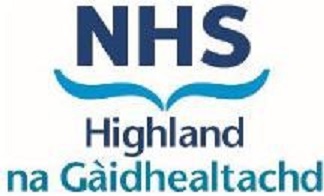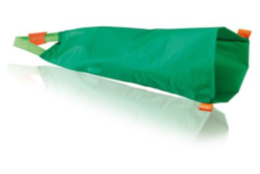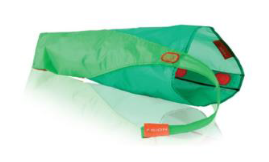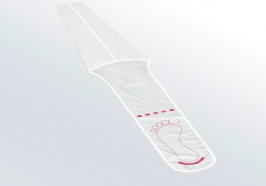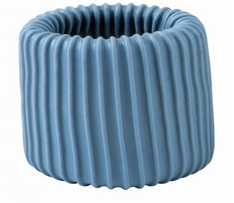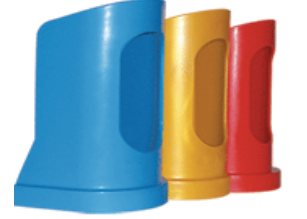A comprehensive medical and social history should be undertaken with all patients regardless of vascular status (NWCSP, 2020).
Before prescribing compression hosiery, the patient should be assessed for the following:
- Absent foot pulses, or diminished compared with other side
- Poor capillary refill – should be less than 3 seconds
- Cold leg and/or foot when compared with the other side
- Painful cramping in calf muscles brought on by activity, such as walking or climbing stairs (intermittent claudication) and relieved by rest
- Obvious lower limb ischaemia, especially rest pain and/or gangrene/ ischaemic ulceration.
If any one or more of these is present, the calculation of an Ankle Brachial Pressure Index (ABPI) may be considered necessary. Those patients with suspected peripheral arterial disease should be referred to the vascular department for assessment. It is important to be aware that an ABPI can only be recorded accurately in a non-oedematous limb, therefore it may be necessary to apply 20mmHg compression to reduce the swelling before undertaking ABPI measurement (NWCSP, 2020).
The condition of the skin must be considered as fragile skin may be damaged whilst donning or doffing compression hosiery. Dexterity and the ability of the patient to reach their feet must also be considered, appropriate donning aids and/or assistance arranged if necessary. A wrapping device may be more appropriate in these instances.
Lower limb compression therapy selection guide
For use following full patient assessment.
|
Is the patient at risk / have oedema but no wounds? |
Does the patient have oedema and wounds? |
|
Provide advice on skin care, exercise and movement, weight management, leg elevation and sleeping in a bed. If the patient has oedema, refer to referral pathway |
Provide advice on skin care, exercise and movement, weight management, leg elevation and sleeping in a bed. If the patient has oedema, refer to referral pathway Follow the wound management formulary for dressing choice Consider referral & collaboration with your local Tissue Viability service for advice and support on dressings. |
|
Garments for at risk / mild oedema:
|
Bandaging for moderate / severe oedema Consider collaboration with lymphoedema services to apply multi-layer bandaging (MLLB) if indicated to reduce or reshape the limb
If oedema is present above the knee, consider applying compression to the whole leg |
|
Garments for moderate / severe oedema If good / normal shape limb:
If poor shape limb (skin folds, distorted shape):
Toe Caps: Haddenham Microfine Toecaps / Jobst Farrow Toecaps |
|
|
If hosiery cannot be donned/doffed, consider donning aids such as: Medi 2in1, Easy Slide, Magnide, Medi Big Butler, Sigvaris Rolly, If the patient has difficulty with compression garments consider a “wrap” which can be adjusted independently: Juzo ACS Light, L&R ReadyWrap, Jobst Farrowwrap |
|
Ankle Brachial Pressure Index (ABPI) / Toe Brachial Pressure Index (TBPI)
ONLY needs to be taken if there are clinical signs and medical history indicating arterial problems that would contraindicate compression including:
- Diminished or absent foot pulses
- Poor capillary refill: should be less than 3 seconds
- Cold leg and/or foot, when compared with the other side
- Painful cramping in calf muscles brought on by activity, such as walking or climbing stairs (intermittent claudication) and relieved by rest
- Obvious lower limb ischaemia, especially rest pain and/or gangrene / ischaemic ulceration.
If the patient has UNSTABLE Cardiac Failure then collaborate with GP/ Consultant prior to treatment.
